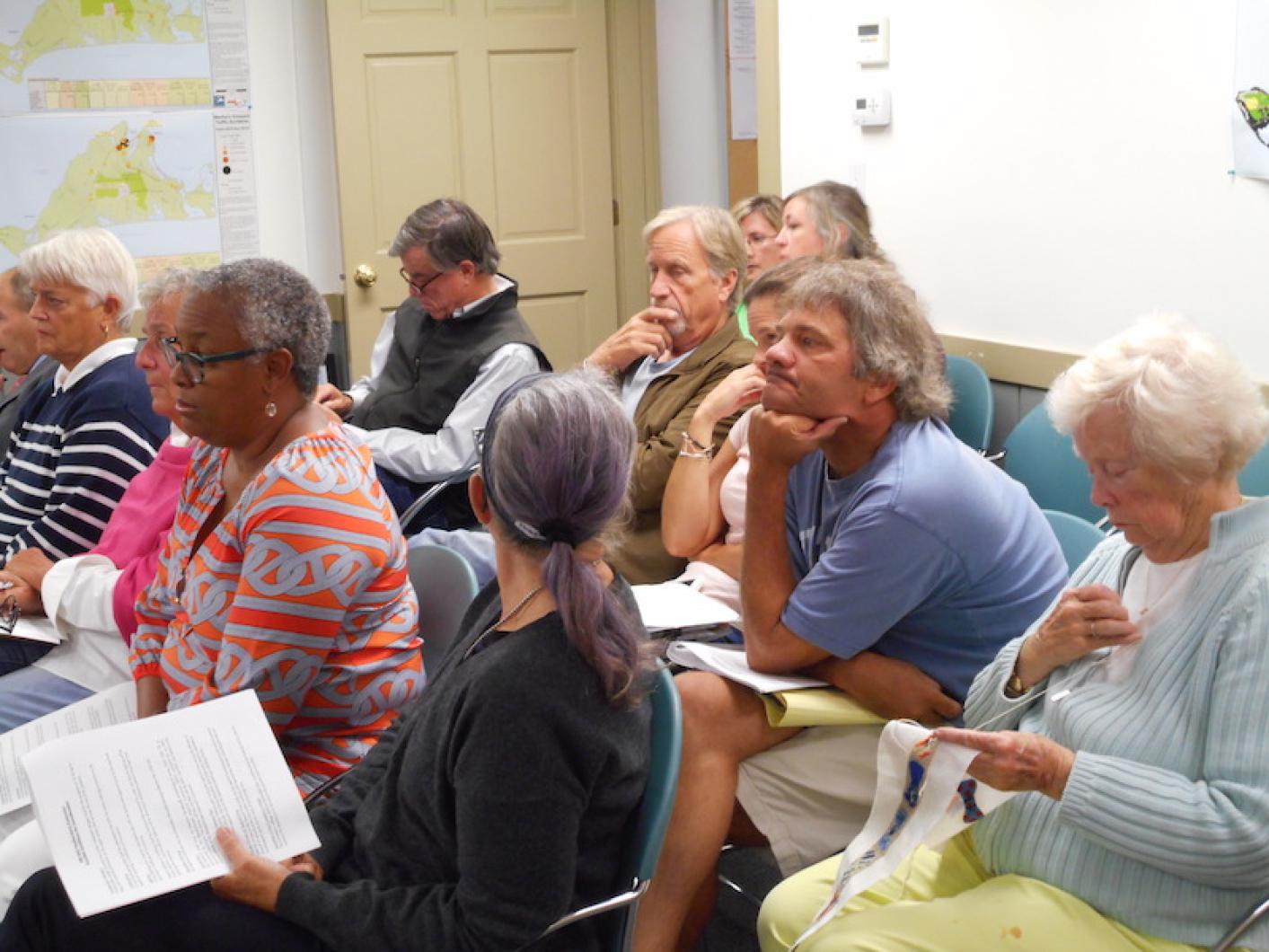Featherstone Center for the Arts will move ahead with plans to replace buildings on its campus near the head of Lagoon Pond, but must abide by unusually high standards for wastewater mitigation, as determined by the Martha’s Vineyard Commission.
The commission approved the plan unanimously at its meeting on Thursday, but only after lengthy debate as to whether the center should be held to a higher standard than other developments of regional impact.
The decision comes as the MVC prepares to update its water quality policy, which limits the amount of nitrogen new developments may produce in the form of wastewater, and was last amended in 2007.
Featherstone plans to replace its pottery studio and Art Barn with structures about three and four times the size, respectively, and to demolish a nearby caretaker’s cottage. Plans also call for removing a small paved area near a protected ancient way and adding four parking spots near the new pottery studio.
The 6.22-acre former horse farm lies in both the Southern Woodlands and Lagoon Pond districts of critical planning concern and is surrounded by Martha’s Vineyard Land Bank property. The small campus lies about a quarter mile from Lagoon Pond, which is among the most impaired estuaries on the Island.
A denitrifying septic system is expected to reduce the current nitrogen load by about 25 per cent, and the center had offered to install a second system if water usage ends up exceeding the limit of 21.15 kilograms per year for the project. But commissioner Doug Sederholm, who did not attend the meeting, had relayed his desire not to see the load increase at all from the current 16.36 kilograms per year.
Most of the discussion Thursday focused on which standard to apply: the current MVC policy, which commissioners acknowledge as being out of date, or the idea that no new nitrogen should enter the watershed.
Commissioner Joan Malkin questioned whether it was appropriate to exceed the policy requirement, but also pointed out that the proposed septic system would allow room for growth without exceeding the current nitrogen load. “The way of dealing with it was to say: If you grow, that’s great. But if you grow to the point where your nitrogen load exceeds your current load, then you would have to install a denitrifying system,” she said. “That was [Mr. Sederholm’s] rationale, which I understand and accept.”
But commissioner Leonard Jason argued that the current estimate of 16.36 kilograms per year (based on water usage) wasn’t enough to go on. “You can drill wells down, you can monitor what the groundwater’s got for nitrates,” he said. “And if it exceeds a certain tolerance, then you can say, ‘Hey there is a problem.’ But we suddenly back into these numbers with very little proof.”
Linda Sibley sided with others who favored a more conservative approach, and said the conditions could always be altered in the future.
“I do think that it is critical that they not exceed their current nitrogen load,” she said of the arts center. “And by using this denitrifying system for two of their busier buildings, they are clearly lowering, no matter how you measure it.” She added that the estimate based on water usage is “the best we’ve got.”
The vote was 7 to 3 to require the limit based on current water usage.
The commission also voted not to require a professional archaeological survey of the site, opting instead to ask a member of the Wampanoag Tribe to be present during construction and keep a lookout for artifacts. Commissioner Christina Brown had argued that a professional dig would likely reveal “smaller things than you might see with a bulldozer,” but the commission voted unanimously to waive the requirement.
And despite struggling with the nitrogen issue, they found little to object in the project.
“I think this is going to be a significant improvement for the overall facility and campus,” Ms. Malkin said, adding that she believed it would benefit the local economy as well. “I think we’ll find that when it’s done it’s going to be an amazing attraction.”








Comments
Comment policy »